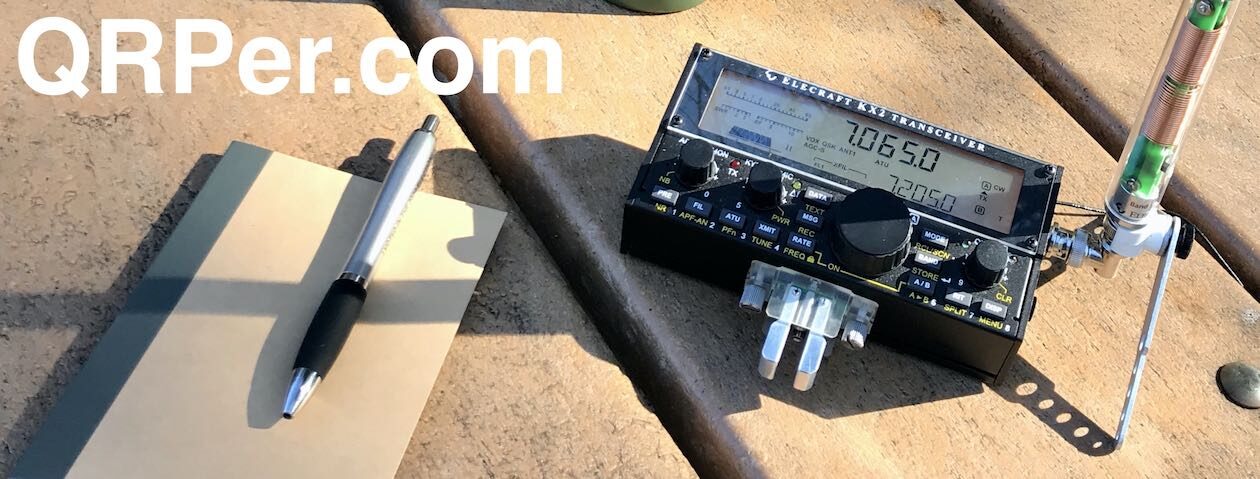Many thanks to Scott (K4VOR) who shares the following article about his portable field radio kit which will be featured on our Field Kit Gallery page. If you would like to share your field kit with the QRPer community, check out this post.
My KX1 Go Box
by Scott (K4VOR)
 I’ve been a ham since college but was out of the hobby for over 20 years, that is until 2020 and COVID. Suddenly I had a lot of free time (like all of us) being stuck at home and somehow the YouTube/Google machine took me down the rabbit hole that is CW.
I’ve been a ham since college but was out of the hobby for over 20 years, that is until 2020 and COVID. Suddenly I had a lot of free time (like all of us) being stuck at home and somehow the YouTube/Google machine took me down the rabbit hole that is CW.
I got my amateur radio license just after the CW requirement was lifted, so I hardly knew dit from dah. Granted, as an aviator, I had some experience “copying” morse code when tuning navaids such as VORs & DMEs. A whopping 3 letters sent at a blistering 7 wpm! But other than that, I was as green as it gets. To make a long (3+ year) story short, I dove head-long into that rabbit hole and today I am sending around 25wpm and can head-copy around 20wpm, something I once thought impossible. Anyway, that’s my story, now on to the field kit!
Over the years I acquired several of the more popular QRP radios, such as an IC-705, QCX mini, (tr)uSDX, and the AMAZING Elecraft KX2.
I knew about the KX1 but I never gave it a second thought. I mean, it’s just a piddly little 3W CW only kit-built rig, right? Well, then one day I stumbled upon one of Thomas K4SWL’s activation videos in which he was using his KX1 – Ruby. There was something about the simplicity of it all. A unique specimen of simplicity and elegance – potentiometers for AF gain, RF gain, and filter width, three momentary push buttons and a VFO. Heck, the thing barely has a display – only a 3-digit 7 segment! That basic “stick and rudder” aspect had me intrigued, but the hook for me was the sound!
Thomas describes it as an analog sound, something you might get from an old tube radio. It’s a buttery-smooth, warm resonance – something that is rare these days with modern SDRs and DSPs.
After hearing that sound, the KX1 became my unicorn radio. After over a year of searching, I finally found mine – a meticulously built 3-bander (40/30/20) with the internal ATU. I am happy to share my go-kit built for this rig, some of which was inspired by “Ruby” herself.
 The kit contains everything I need to get on the air, all in one Pelican 1060 case.
The kit contains everything I need to get on the air, all in one Pelican 1060 case.
 I will start with the antenna. Nothing fancy. Just a BNC binding post adapter coupled with a 27’ radiator and a 16’ counterpoise. It tunes up nicely using the KX1 internal tuner. 1.0 on 20 and 30 meters and 1.4 or better on 40 meters. The antenna winder is a 3D printer one I designed to easily fit in the Pelican 1060.
I will start with the antenna. Nothing fancy. Just a BNC binding post adapter coupled with a 27’ radiator and a 16’ counterpoise. It tunes up nicely using the KX1 internal tuner. 1.0 on 20 and 30 meters and 1.4 or better on 40 meters. The antenna winder is a 3D printer one I designed to easily fit in the Pelican 1060.
 For power I am using a TalentCell 12v 3000mAh battery, which will run the KX1 for several hours.
For power I am using a TalentCell 12v 3000mAh battery, which will run the KX1 for several hours.

The key is a Palm Radio Pico Paddle (no longer in production), although a K6ARK tiny paddle will rotate in and out from time to time. One day I would like to find a KXPD1 which sadly was not included with my KX1 when I bought it.

For antenna deployment, I have 65’ of “throw line”, a.k.a. masonry/construction twine, and a rip-stop nylon draw-string pouch that I to use as a throw weight by tossing a couple of rocks inside. The throwline stows away inside the nylon pouch along with a dollar store set of earbuds.
 Photos: In the field
Photos: In the field




And that’s it! This has become my go-to kit that I grab whenever I think I might have the chance to play radio when I am out and about. Thanks for reading and I hope to see you on the air!
72 – Scott K4VOR




































































